The Allure of the Three Graces
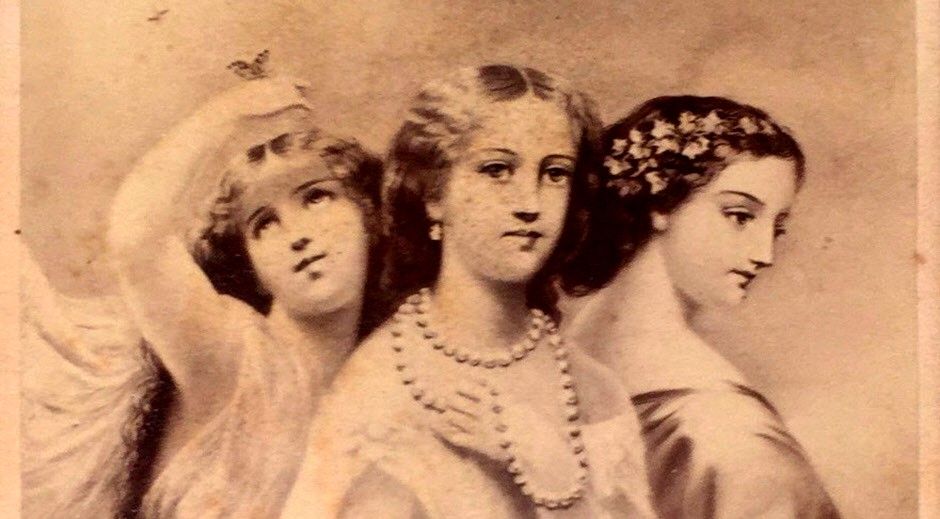
by Diane DeBlois
Designers love to group figures in three’s. This could be a reference to the Three Graces of Ancient Greece (Aglaia, Euphrosyne and Thalis – or brightness, joyfulness and bloom). Or the three fine arts: music, painting, literature. Or the three could be the Fates deciding the length of our life: Clotho (with her spindle), Lachesis (with her measuring device) and Atropos (with her shears). Christianity invokes Faith, Hope and Charity; we divide our sense of time into Past, Present and Future.
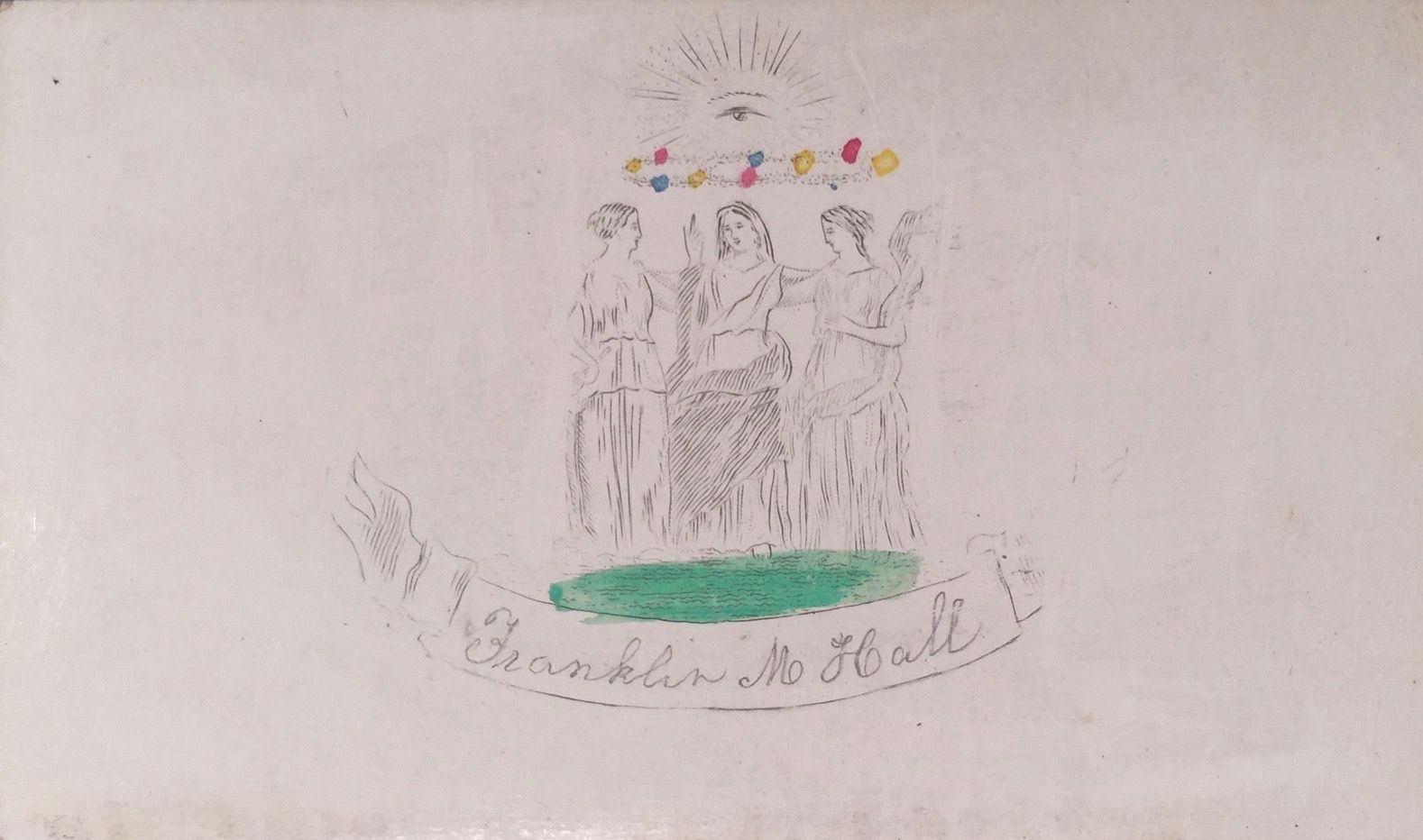
Figure 1
1840s 3 graces engraved on a coated stock callng card.
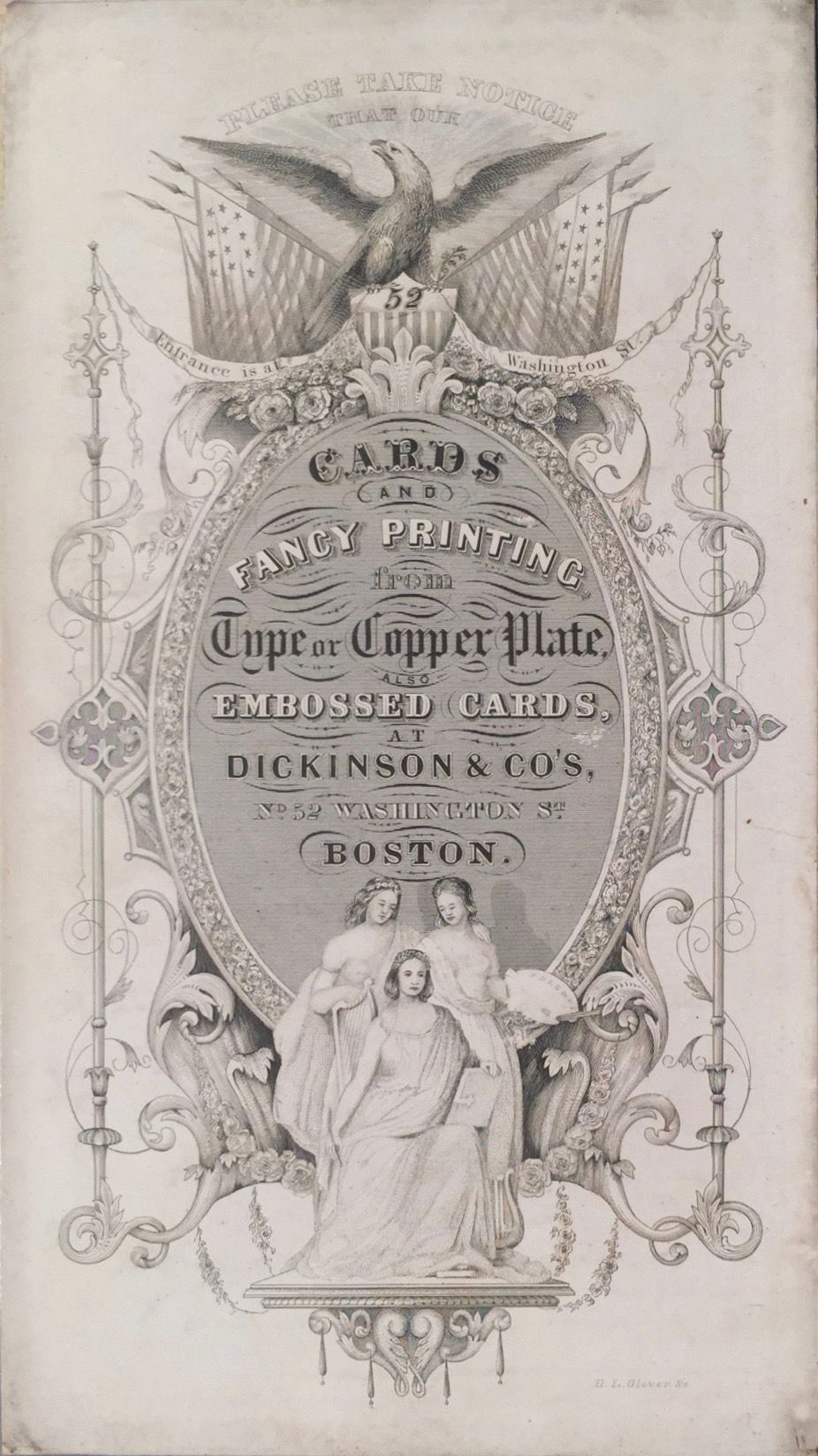
Figure 2
1860s engraving incorporating the figures of the fine arts by D.L. Glover to advertise Dickinson & Co. Boston.
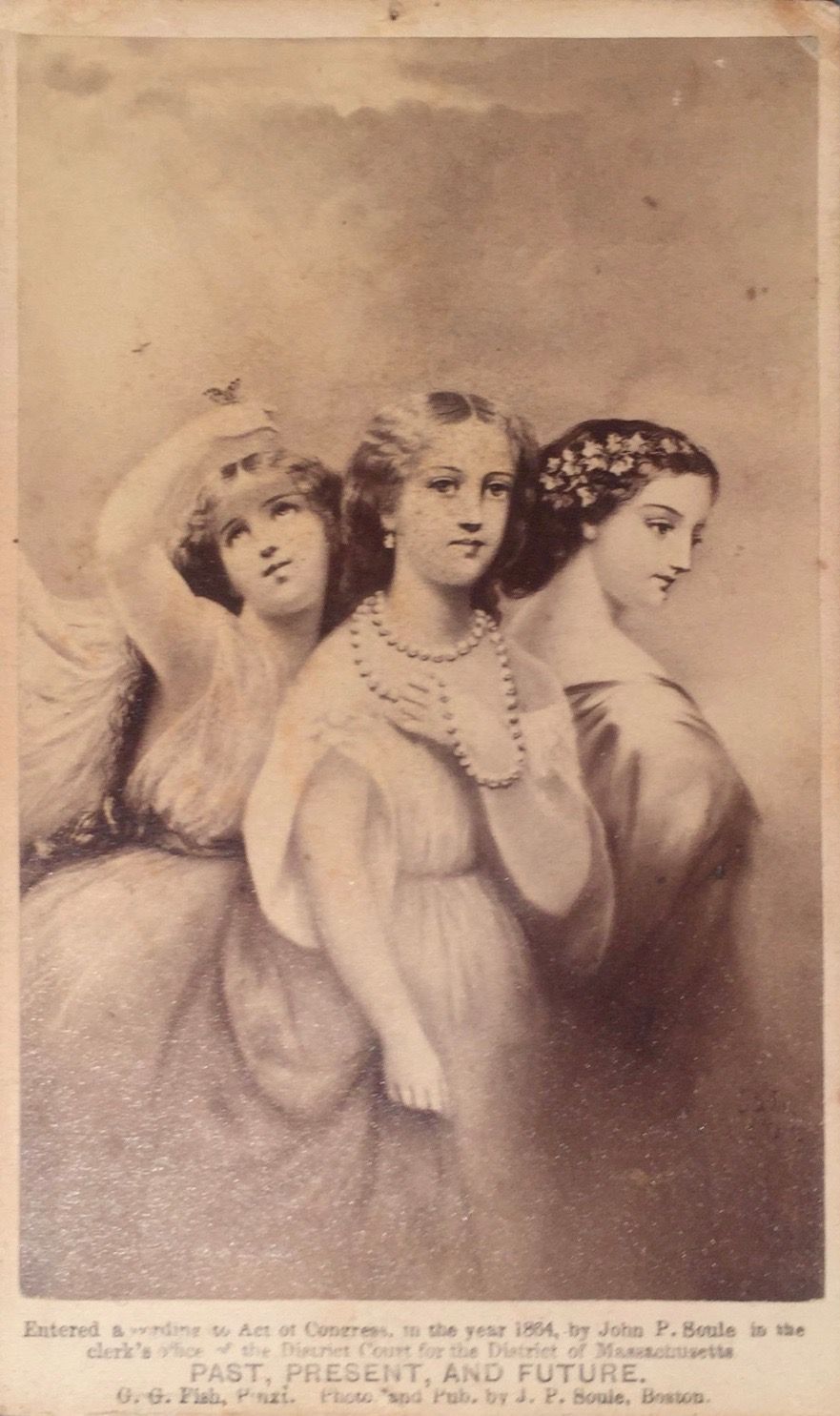
Figure 3
1864 photograph by John Payson Soule of a painting of Past, Present and Future, mounted on a carte de visite.
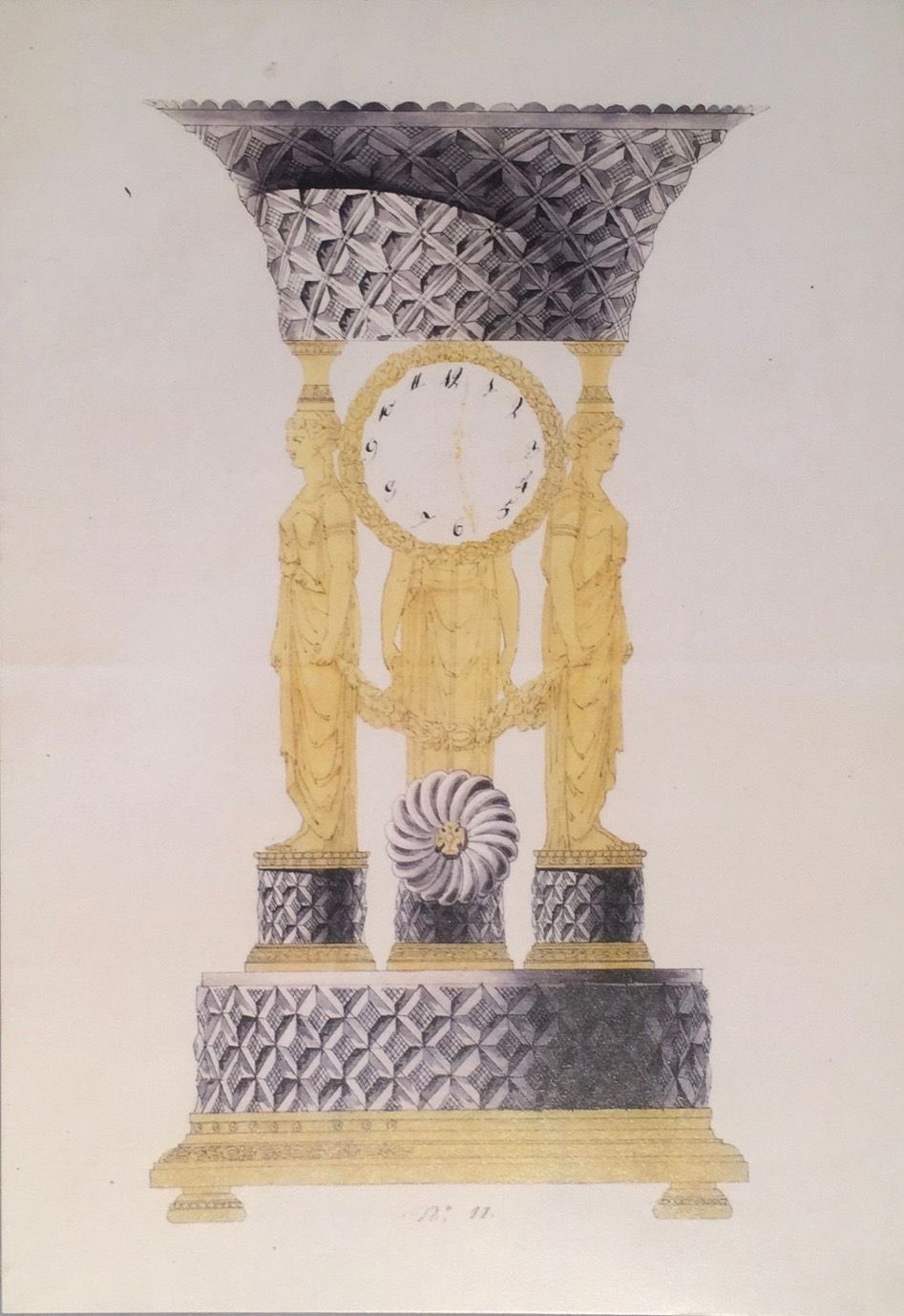
Figure 4
1870s chromolithographed design for a French mantle clock with figures of the three graces.
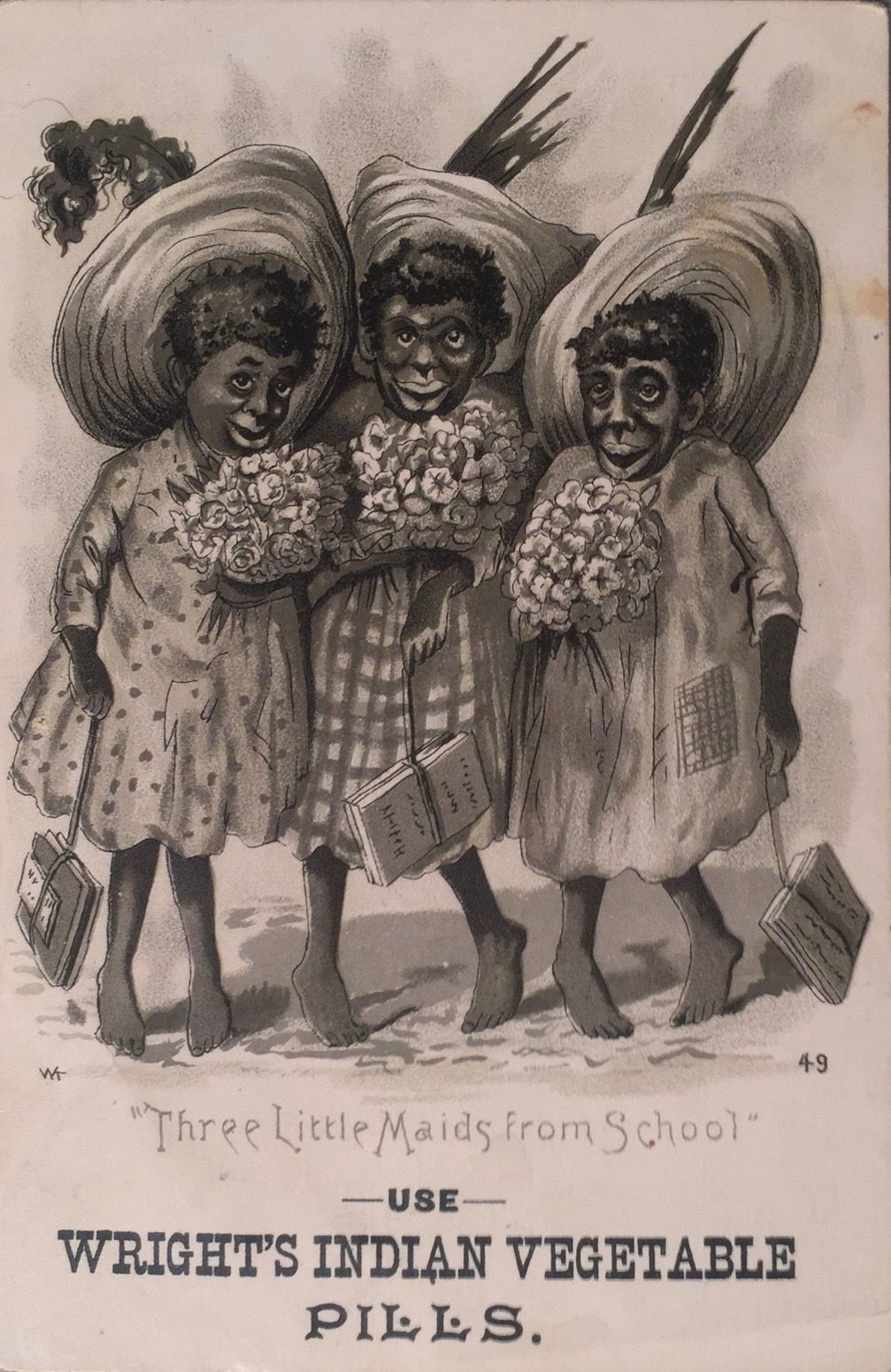
Figure 5
A ‘black face’ caricature appears as number 49 in a set, overprinted for Wright’s Indian Vegetable Pills.
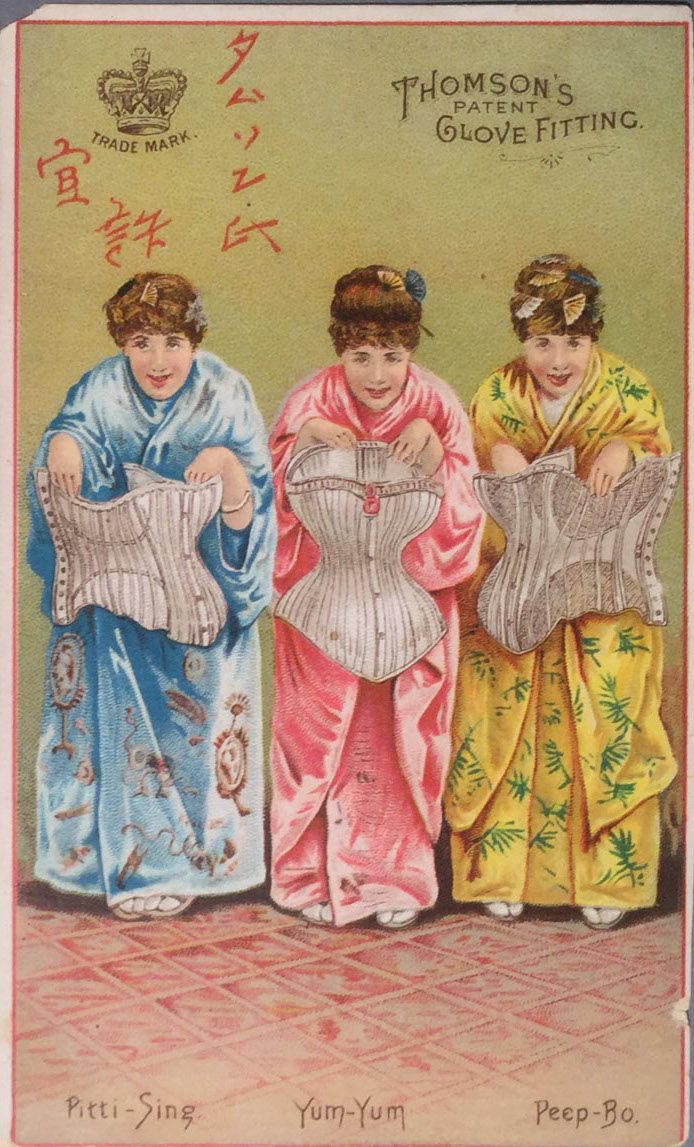
Figure 6
The same Little Maids advertising Thomson’s patent corsets
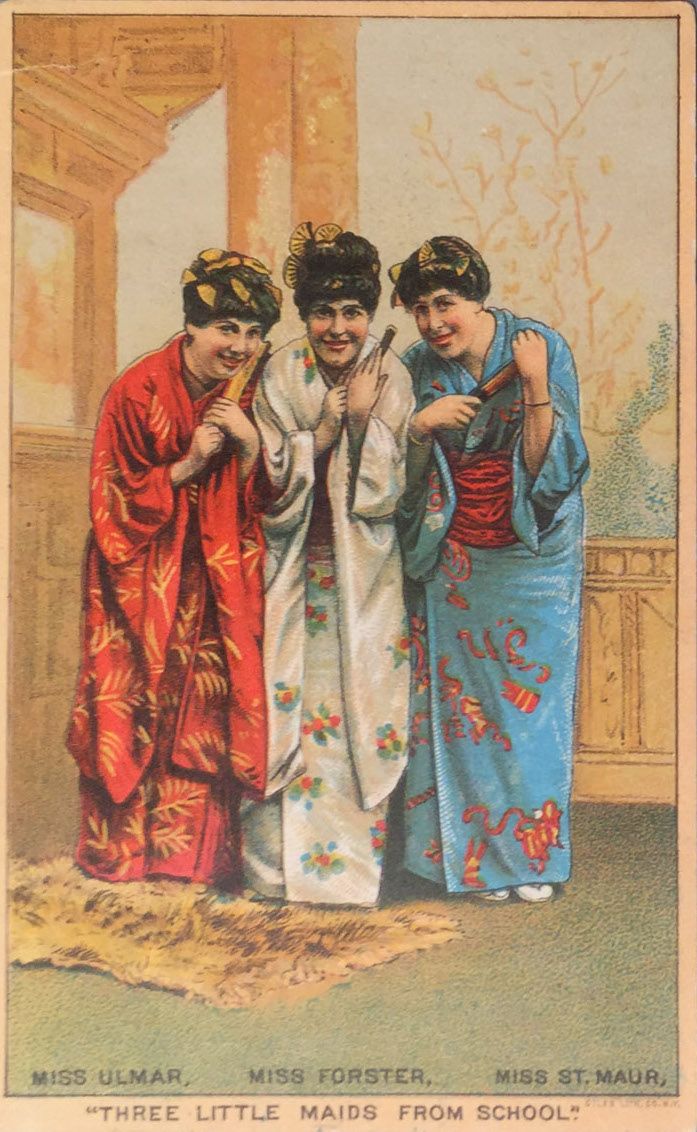
Figure 7
1880s – Gilbert and Sullivan’s hit musical drama, The Mikado, inspired several versions of the Three Little Maids from School
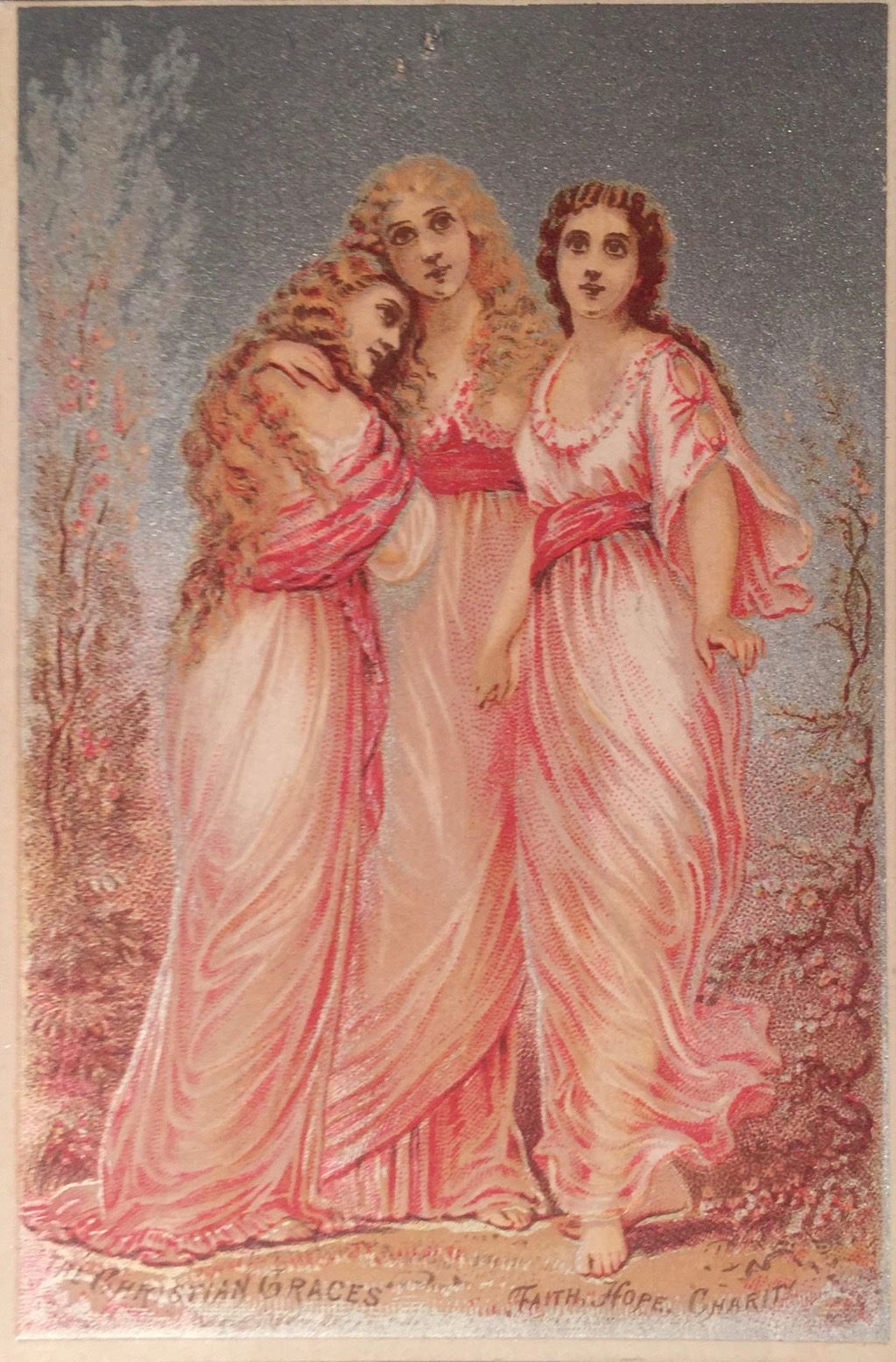
Figure 8
1880s a chromolithographed trade card of the Christian Graces.
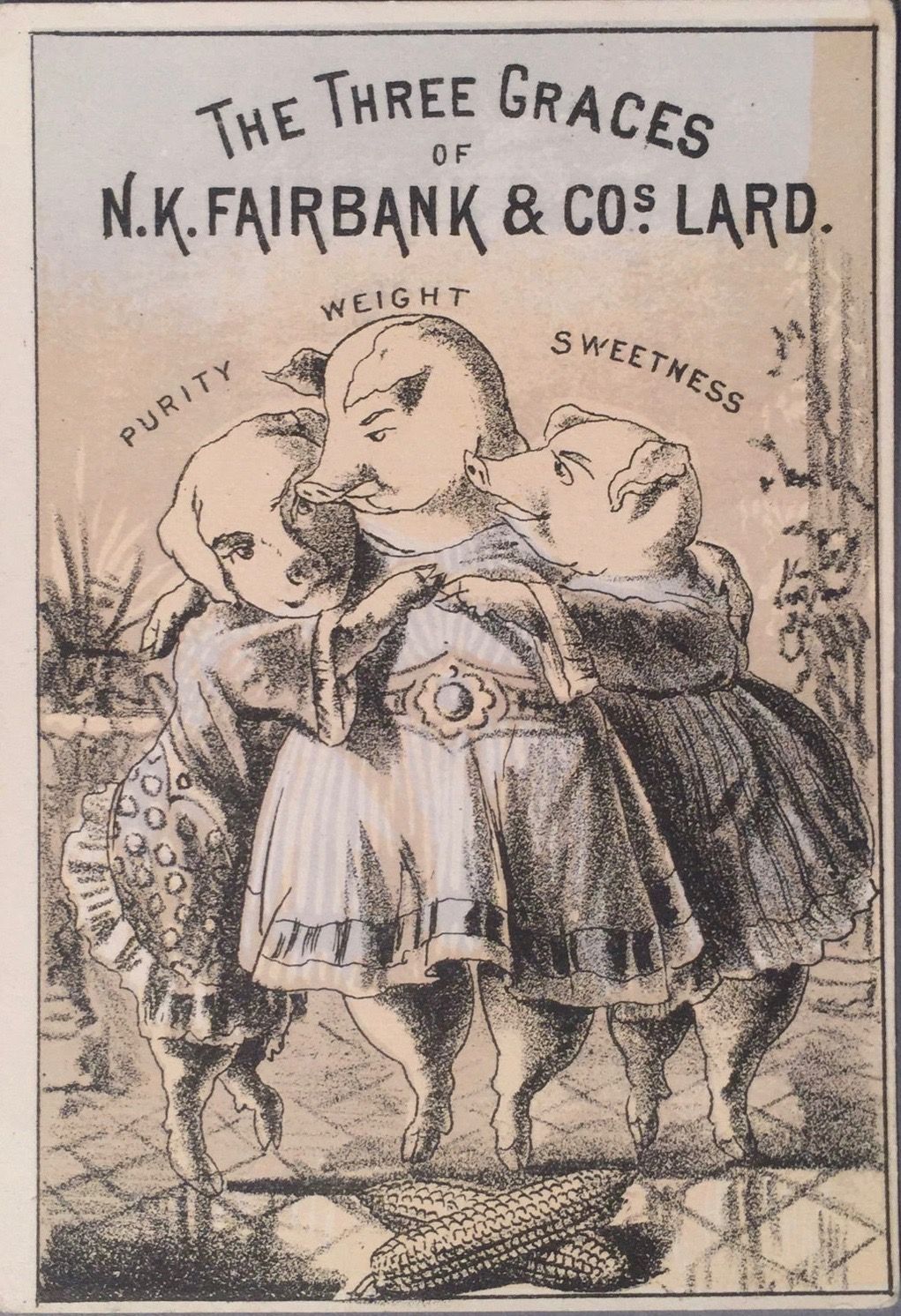
Figure 9
1880s trade card satire of the Three Graces to advertise Fairbanks Lard.
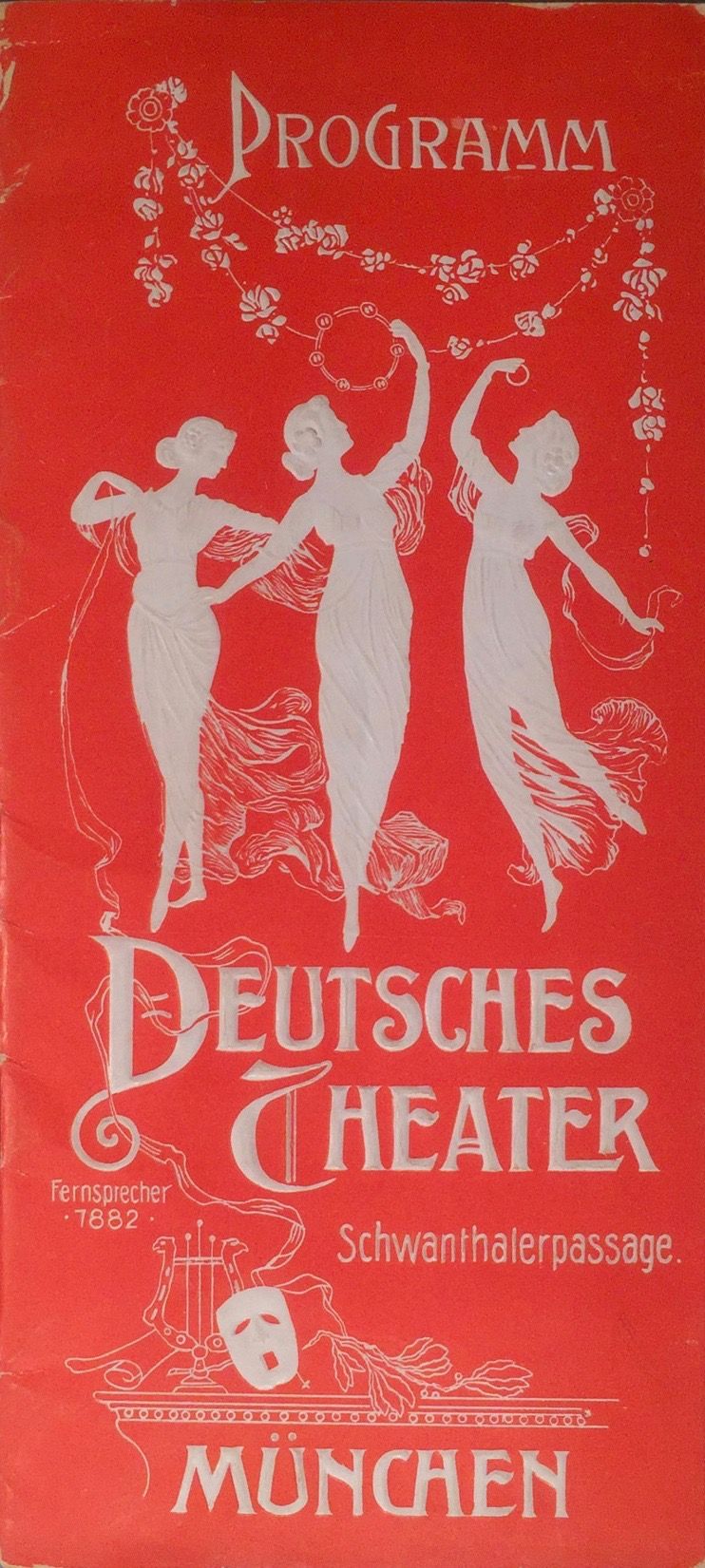
Figure 10
1882 embossed cover to a theater program in Munich.
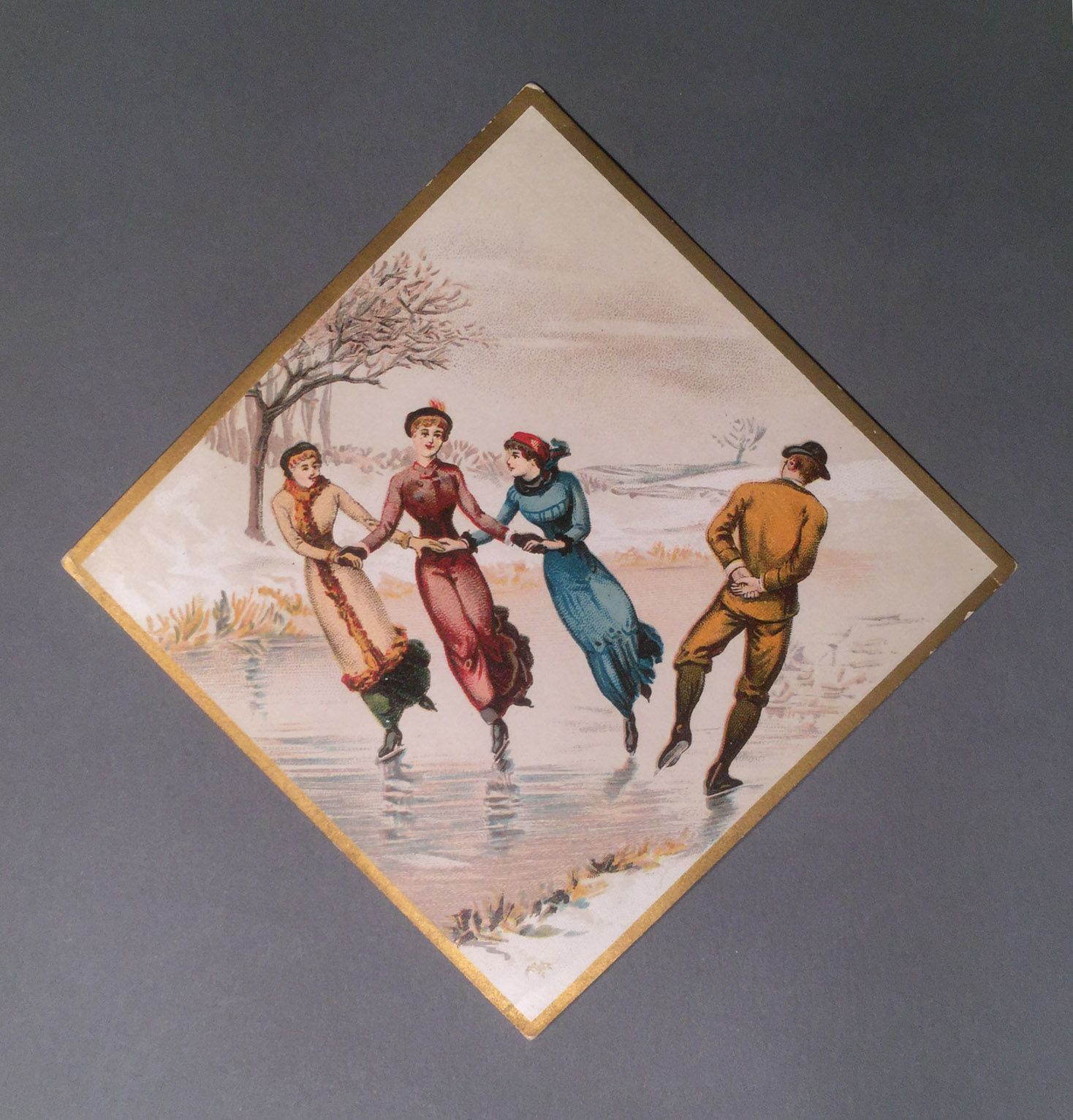
Figure 11
1880s stock trade card of the three graces on skates.
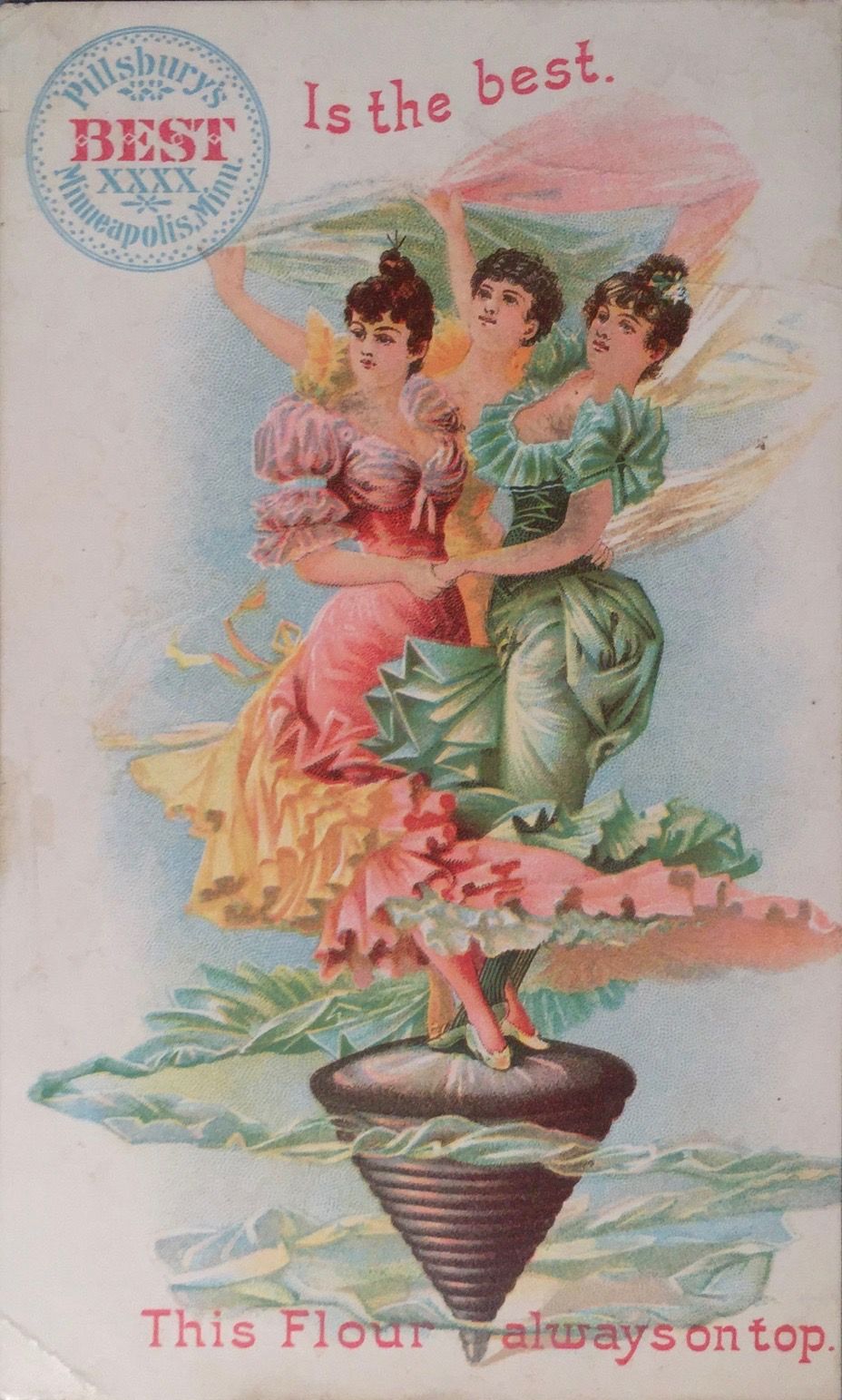
Figure 12
1890s chromolithographed trade card of the three graces spinning on a top, overprinted for Pillsbury flour with an appropriate slogan.
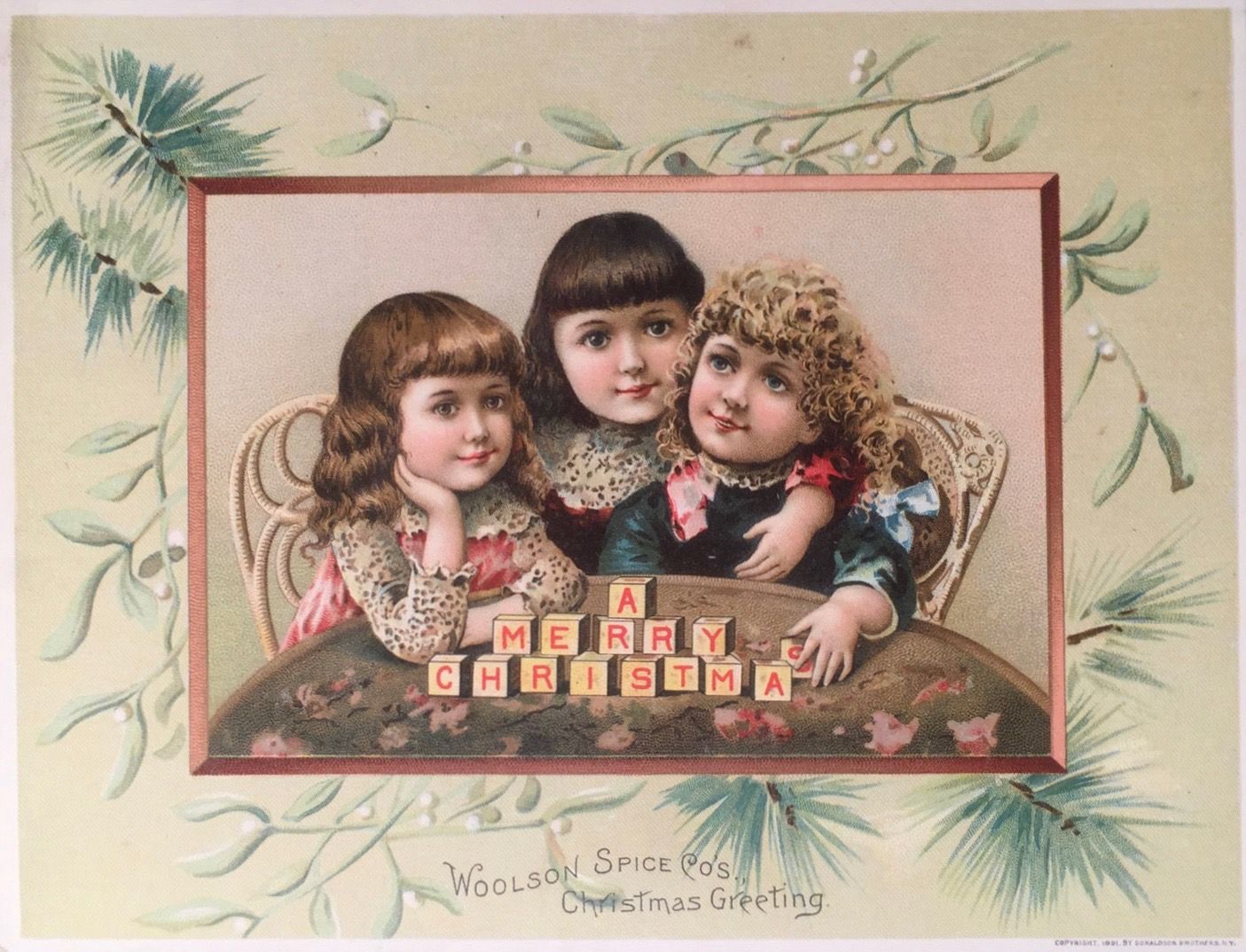
Figure 13
1890s chromolithographed Christmas card – a blonde, a brunette, and a red-haired child, copyright 1891 by Donaldson Brothers NY.
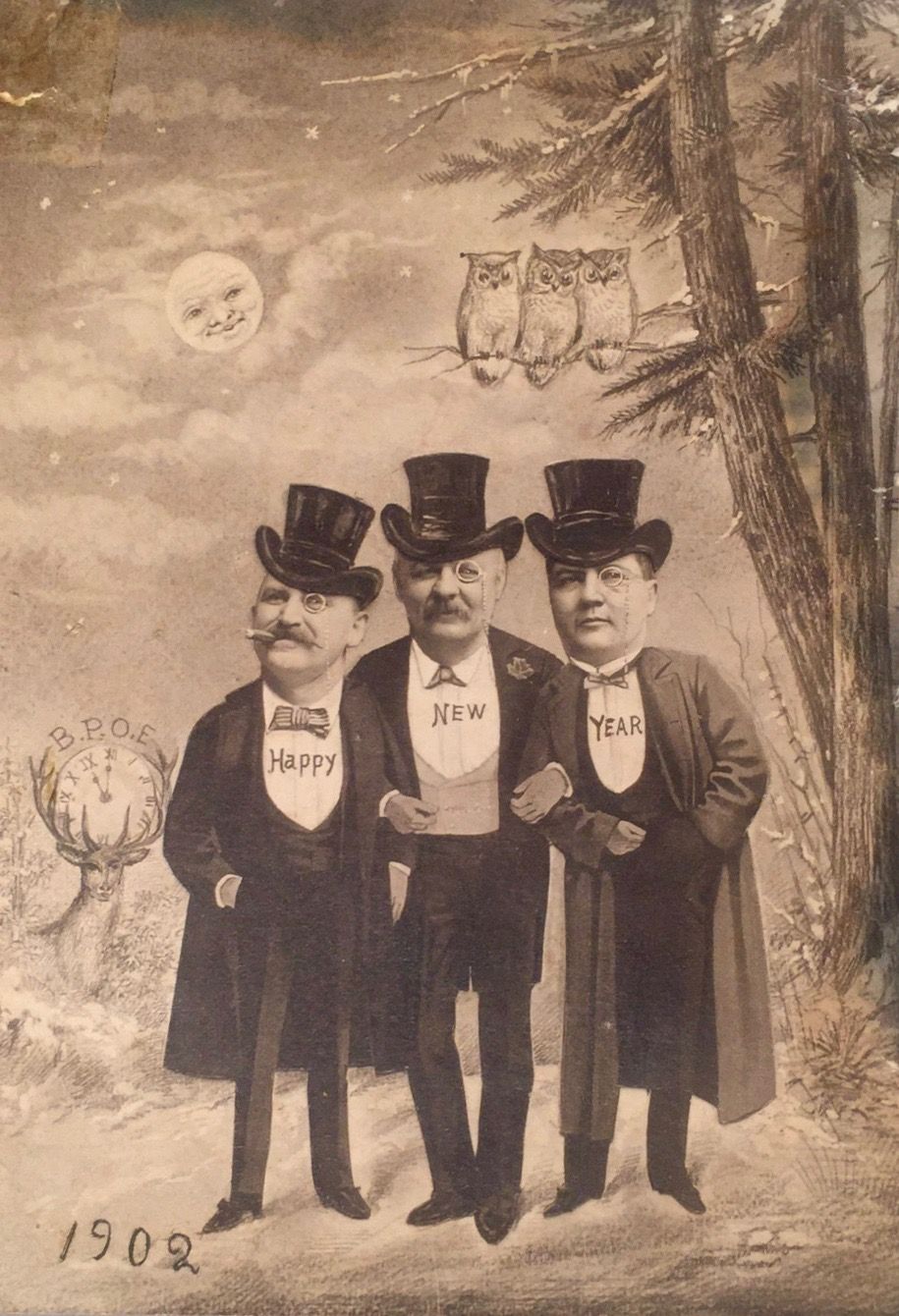
Figure 14
1902 New Year’s card, incorporating the photographed heads of three Elks brothers.
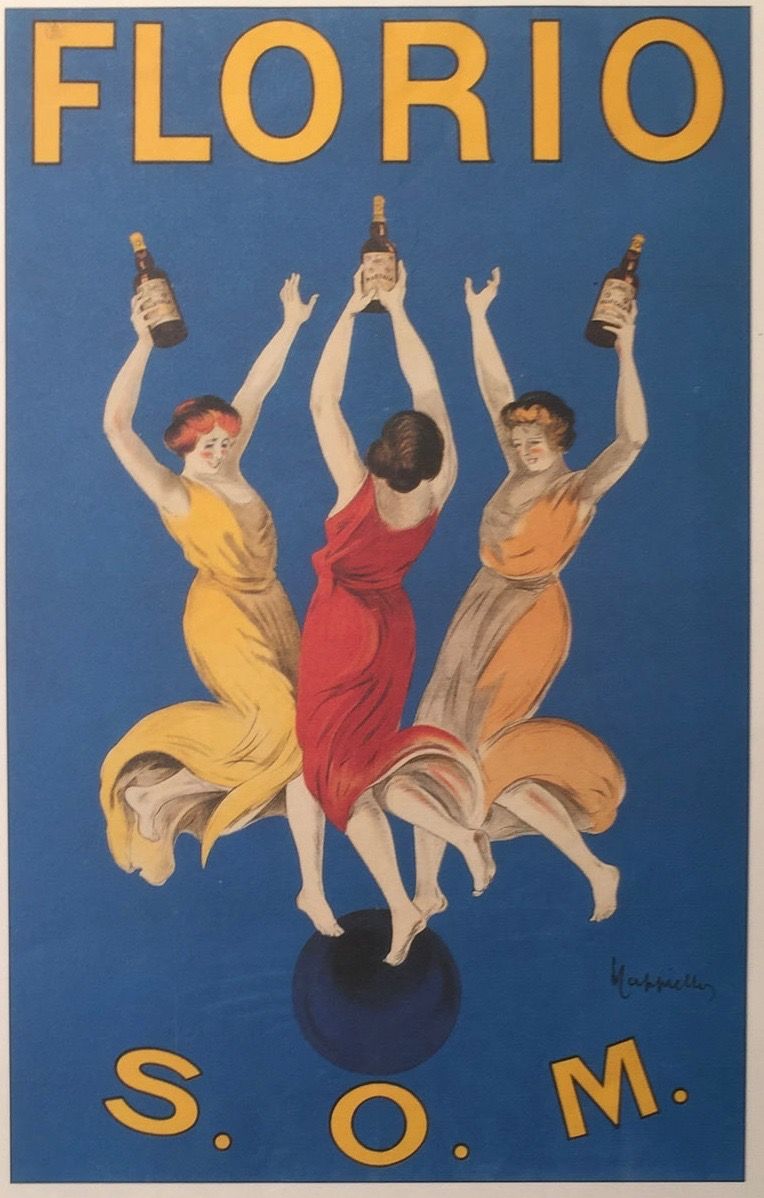
Figure 15
1910s screen-printed counter card advertising Florio Marsala wine, with dancing graces by the artist Mappiello.
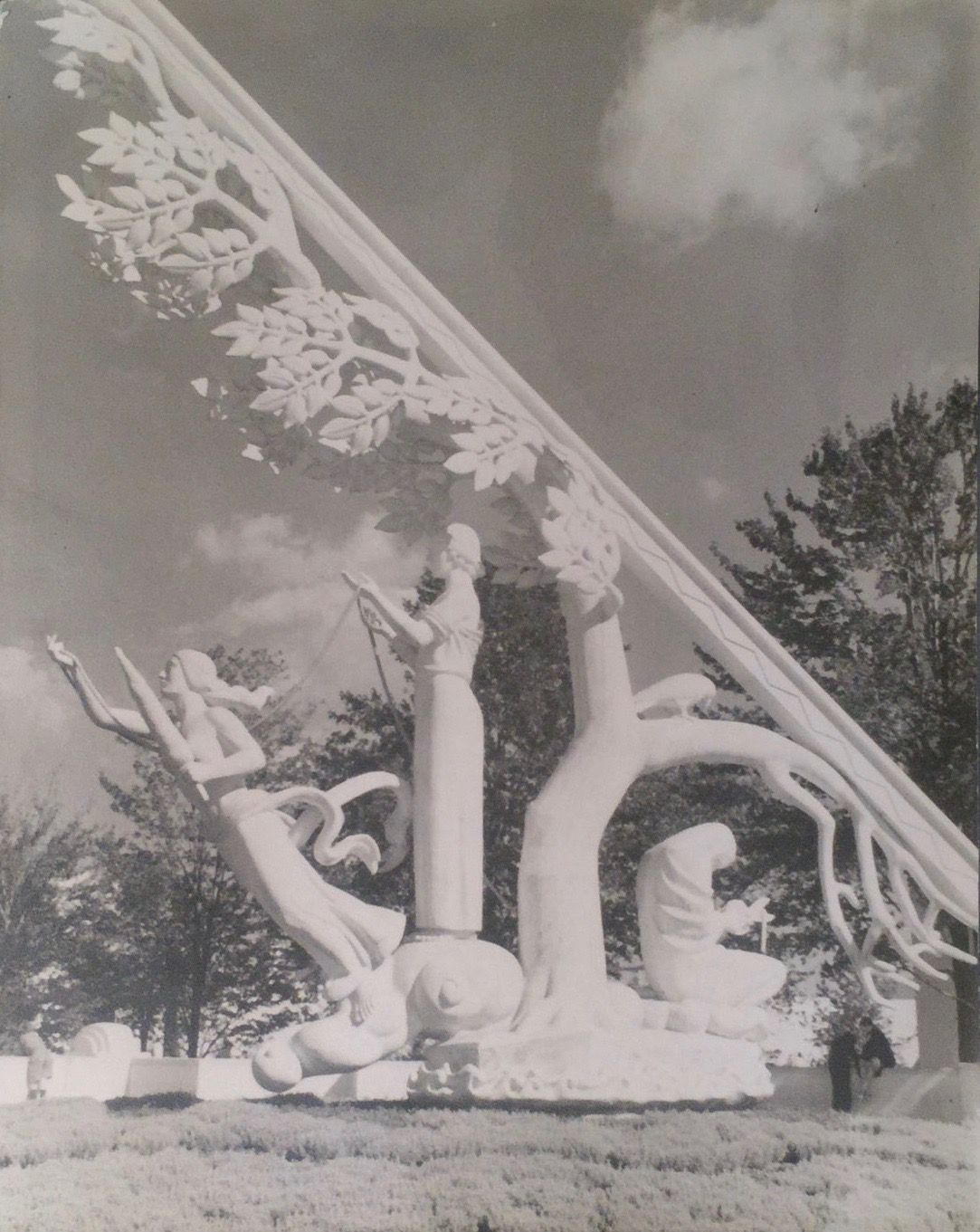
Figure 16
1939 promotional photograph of the New York World’s Fair sculpture that formed the nomen to the largest sundial in the world: “Time and Fates of Man” by Paul Manship.
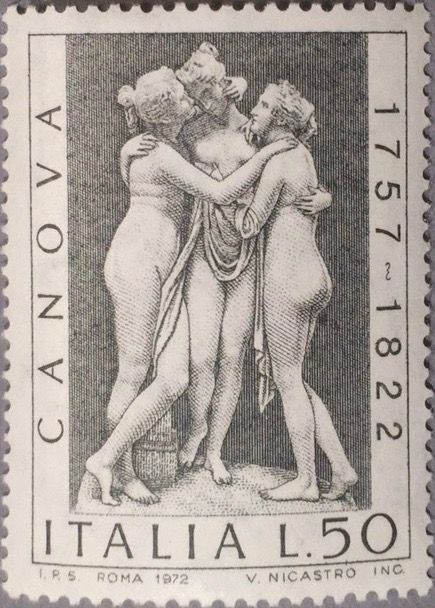
Figure 17
1972 an Italian postage stamp honoring the sculptor Canova.
